Four
FOR YOUR DINING AND DANCING PLEASURE
Musical groups have been performing in Cincinnati since the time the Queen City was little more than Fort Washington. European musicians, opera companies, and minstrel shows were traveling the country performing at every town along the way. By the dawn of the 20th century, burlesque and vaudeville circuits dominated the traveling entertainment industry.
Audiences experienced countless performances by vaudeville actors who worked tirelessly on stages from the Standard Theater in Over-the-Rhine to the Palace in New York City. They were typically in 28 shows a week, giving almost 1,400 performances a year. Local musicians had similar stories. When the big bands came to town, a drummer or trumpet player from Cincinnati was usually playing on stage in the orchestra. Audiences were too busy enjoying the show to consider the hectic lives of the traveling entertainers, which were often more remarkable than the performances themselves.
Vaudeville was more than just a career; for many actors, it was their whole life. During a typical trip in 1928, a vaudeville actor would race from the theater to the railroad station when the final curtain closed. After grabbing a quick bite, he boarded a train and slept on the all-night ride, changing trains in the wee hours. Upon arrival hours later, he checked into a hotel, rushed to the theater, rehearsed the music, ran over the light cues, checked the props, and put on his makeup—all just in time for the first of five shows. After this whirlwind day, he either stayed put for a week of shows or checked out of the hotel and hopped another train and did it all again the next day, as he would for the following weeks and months.
The musician’s lifestyle was similar. Early small orchestras usually consisted of three violins, three brass, three saxophones, and three rhythm: piano, drums, and bass. Bands of the 1920s also included a guitar, banjo, tuba, or bass sax. Bands gradually expanded, each playing its own unique styling of current hits. Custom arrangements written by one of the band members allowed a group covering blockbusters like In the Mood and Sing Sing Sing to sound slightly different than Glenn Miller.
Just like their vaudevillian cousins, musicians traveled from city to city. Railroad tickets and frequent hotel stays were cheaper and more common; modern prices have made this practice cost-prohibitive. Musicians on the road were gone for weeks or months at a time and sometimes rented apartments in their new locales until they lost that gig and moved on to the next town.
Their talent and willingness to play anywhere afforded musicians opportunities that regular folks would never experience: playing drums in the Glenn Miller Orchestra at the Shubert, or backing Pearl Bailey at the Albee with a horn. Indeed there were tight schedules and stifling summer nights at Moonlite Gardens and other outdoor pavilions, but Cincinnati musicians enjoyed entertaining the appreciative crowds with hundreds of fellow musicians in the best and worst spots in town.
Audiences enjoyed live music at Cincinnati nightclubs, hotel ballrooms, and even radio stations. Different shows played every night in the Florentine Room at the Hotel Gibson. The Beverly Hills Country Club featured hundreds of big-name bands and Vegas-style entertainment. Dance bands played almost every night at the Lookout House, and Jimmy Dorsey and Artie Shaw appeared regularly at Castle Farm, giving two nightly floor shows. Jimmy Brink’s supper club at 522 Vine Street offered dinner, cocktails, and a live orchestra.
Folks stepping out in 1933 had endless opportunities for fine dining and dancing destinations any night of the week, including the following: Castle Farm Supper Club, with hot tunes by Ben Pollak; the Cotton Club, with torrid music by Frank Terry and his floor show; Club Anthony Wayne, featuring the Royal Ohioans; Club Hollywood, with the Harlem Rhythm Boys and an all-black floor show; the Florentine Room at the Hotel Gibson, with music by Buster Locke; the Rathskeller at the Hotel Gibson, with Mel Snyder’s Orchestra; Horseshoe Gardens, featuring Paul Specht’s Orchestra; the Chester Park Skating Rink, for fun and dancing on roller skates; the Restaurant Continentale at the Netherland Plaza for lunch and dinner and the Pavillon Caprice after 10, with the popular Bernie Cummins; Kiefer’s Gardens, featuring Kiefer’s Serenaders; Swiss Gardens, with Paul Cornelius’s band; Summit Lodge, presenting the Fort Thomas Melody Maids; the Grand Café and the Auf Wiedersehen Tap Room at the Sinton-St. Nicholas Hotel, with the smooth music of Cliff Burns; the Wooden Shoe Garden, featuring Buddy Warner’s band; and the Greystone Ballroom at Music Hall, with Karl Rich on Saturdays and Joe Chromis on Wednesdays.
Broadway musicals, vaudeville revivals, and major stage presentations that visited the Queen City appeared at the biggest theaters in town. A few of the celebrities who thrilled Cincinnati audiences for decades included the Andrews Sisters at the Albee in 1946, Spike Jones at the Taft, Pearl Bailey and her Louis Belson Orchestra at the Shubert, Connie Wilson, Peggy Lee, Vaughn Monroe, Sammy Kaye, Bob Crosby, and Charlie Spivak. The average admission fee was 50¢.
Besides live music and variety performance, folks could experience opera and legitimate theater at numerous locations. Pike’s Opera House on Fourth Street was home to the Symphony Orchestra for its first two seasons. Built in 1859, it was proclaimed the finest concert hall west of Philadelphia. Pike’s was the center of Cincinnati entertainment until it burned down in 1866. It was rebuilt five years later, only to be destroyed in another fire in 1903. Music Hall was built in 1878, originally designed for concerts and industrial expositions. The interior of the castlelike red-brick edifice, since remodeled several times, continues to host countless symphony, opera, and theatrical performances. It also houses Music Hall Ballroom (formerly the Topper Ballroom), one of Cincinnati’s last formal dance floors. The Vine Street Opera House at Vine and Central Parkway opened in December 1900. A pork-packing plant when it was built in the late 1800s, it then operated as a German theater until 1900. After serving for a number of years as a civic center, the building was torn down in June 1930.
Opening in 1903, the Walnut Street Theater presented Cincinnati with many years of affordable stage shows. Henrietta Crosman, Joseph Kilgour, George Wilson, and other members of the Walnut’s stock company went on to national careers. The 2,211-seat Emery Auditorium opened in 1912. The Cincinnati German Theater Company played at the Emery until the company went bankrupt in 1914. The Emery also hosted the Symphony Orchestra from 1912 to 1936. Local dramas and small Broadway shows played at the Cox Theater for decades until it closed in 1954. The Taft Theater, part of the Masonic Temple Building at Fifth and Sycamore, was built in 1928 and seats 2,500. Lectures, plays, comedians, and large shows continue to appear at the Taft today, although the theater is closed during the summer due to its lack of air-conditioning.
No matter what was happening locally and around the world, legitimate theater always persevered. The Restaurant Continentale in the Netherland Plaza introduced theater-in-the-round in October 1950, premiering with the George Kelley drama Craig’s Wife. A decade later, Playhouse in the Park opened in the 125-year-old shelter house in Eden Park. Meyer Levin’s Compulsion was the first presentation to appear on the brand-new Playhouse stage. This new repertory theater seated 182 with a floor plan similar to some off-Broadway theaters. Later expanded to seat 225, it was renamed the Thompson Shelterhouse. Another auditorium was added in 1968; this larger Robert S. Marx Theater seats 626.
The choices were nearly endless. With nightclub orchestras, variety stage shows, musicals, dramas, comedies, and vaudeville revivals, Cincinnati always had great places for folks to go for nights filled with fun, dance, and romance.
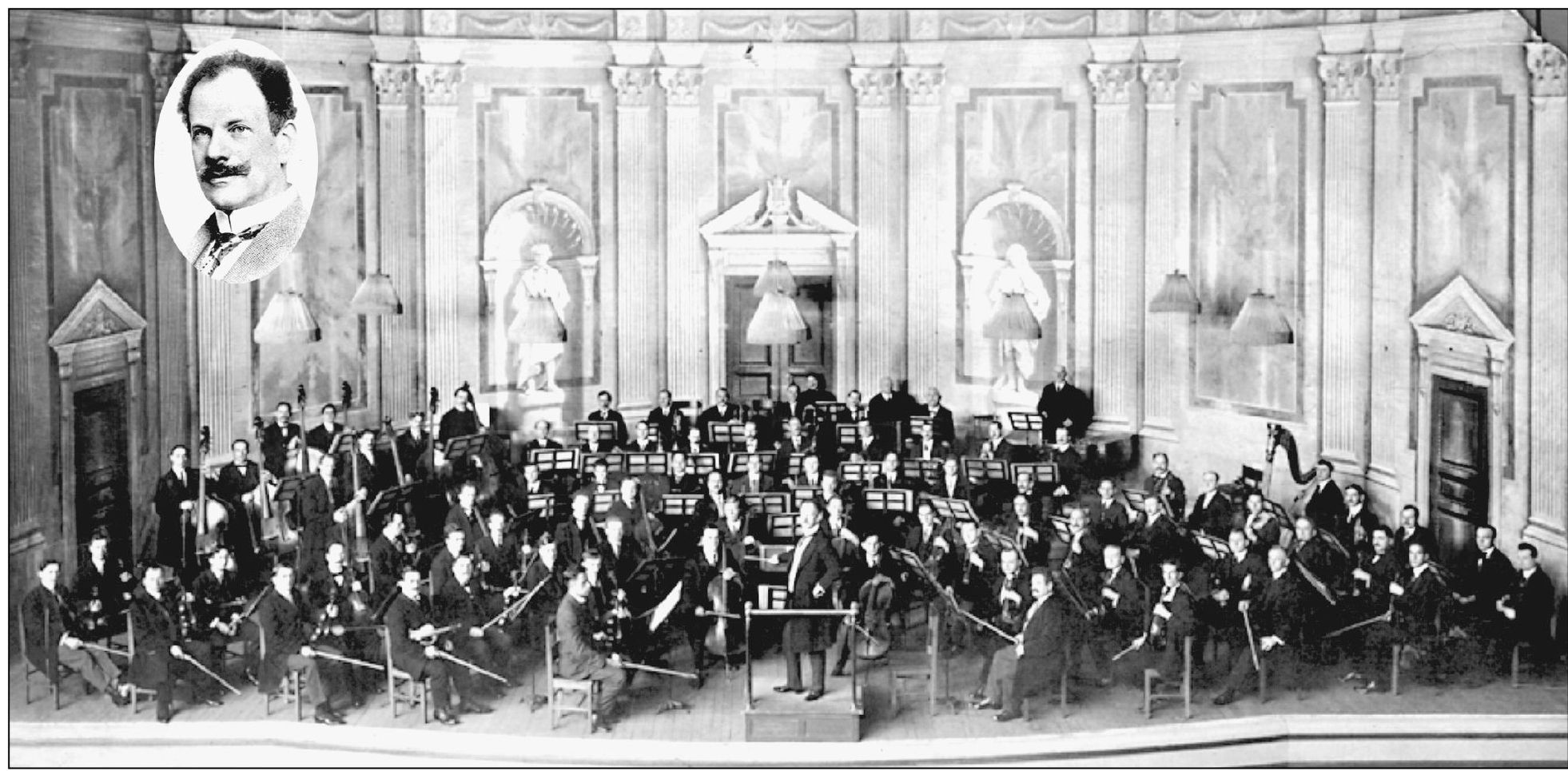
Dance orchestras, vaudeville shows, live theater, and symphony music could all be experienced in the Queen City. Ernst Kunwald (inset) conducted the Cincinnati Symphony Orchestra from 1912 to 1918, while the orchestra played the Emery Auditorium. The orchestra moved back to Music Hall in 1936. (Courtesy of the Cincinnati Symphony Orchestra; inset courtesy of www.cincinnativiews.net.)
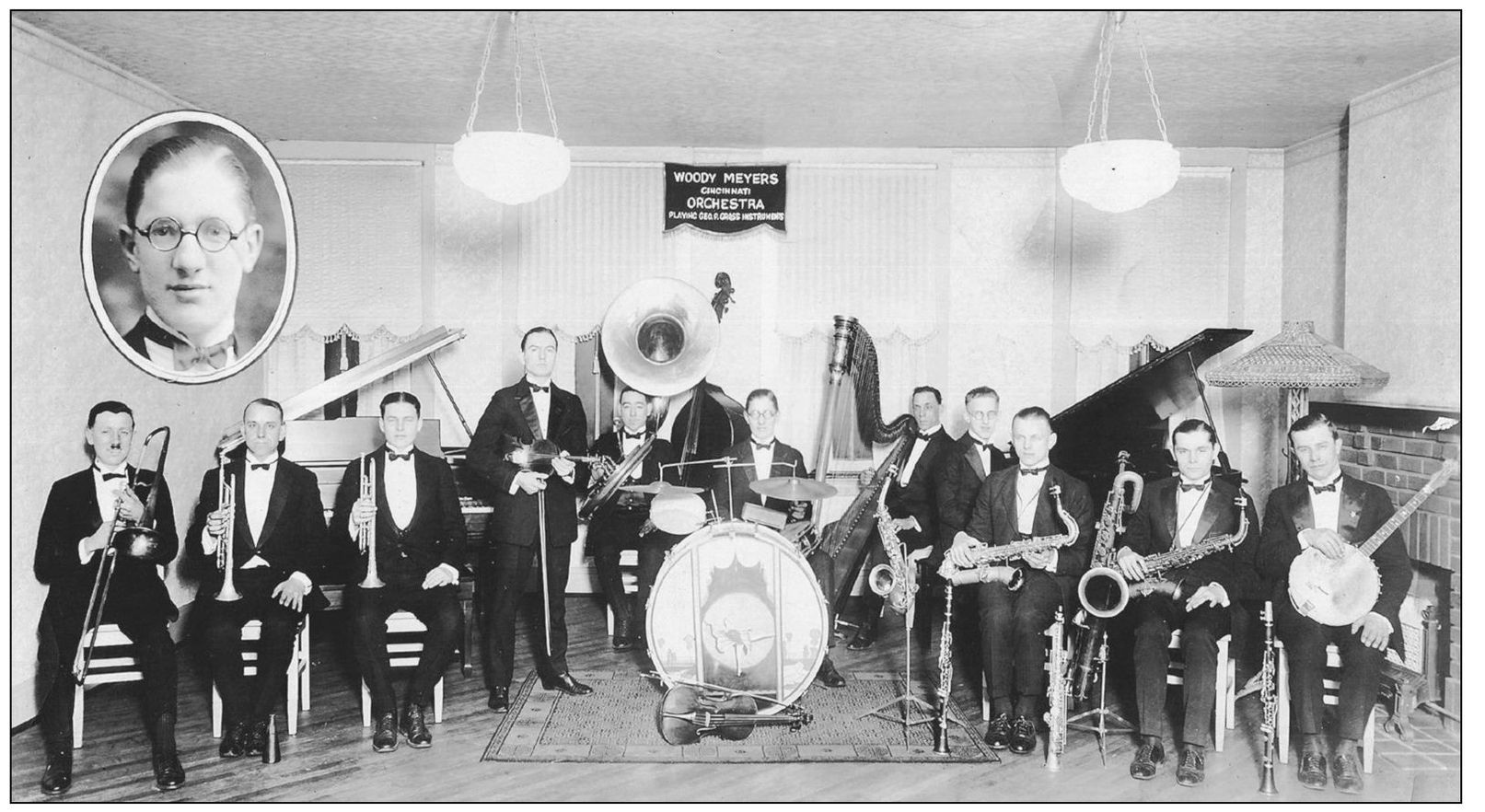
When folks stepped out in 1924, one place to go was Goodwin’s Palace Gardens to enjoy a nice dinner and afterward dance to the big band sounds of the Woody Meyers Orchestra. Holding the violin and standing next to the tuba is band leader Ted Kennedy. (Courtesy of the Cincinnati Musicians Association Archives.)

The Marion McKay Band played hot jazz at Swiss Gardens, located on Reading Road near Bond Hill, in 1925. This group also performed live on WLW radio. (Courtesy of the Earl Clark Collection.)

Lee Bludau and his Merry Kings performed at different venues around town, including the Couvier Press Club in 1926. The Merry Kings included Larry Carey on trombone, Sammy Funk on trumpet, Fred Love on tuba, Joe Schmidt on drums, Gus Schmitz on banjo, Ralph Barnhart on saxophone, Charles Finch on piano, and leader and saxophonist Lee Bludau. (Courtesy of Rita Robertson.)

Country and western groups, like this one from 1930, competed with the big band orchestras. Hillbilly music had a huge following on the radio, and WLW and WCKY geared some programming to serve listeners in communities preferring this style of music. (Photograph by Ed Kuhr Sr.; courtesy of the Dan Finfrock Collection.)

The Federal Theater Project of the Works Progress Administration put unemployed actors back on the stage during the Great Depression. Works of Shakespeare and those of contemporary playwrights were introduced to millions nationwide, many of whom had never before seen legitimate theater. Here, the WPA presents The H.M.S. Pinafore on a fall day in 1936 at Burnet Woods. The play was directed by Nicholas Gabor and ran for two weeks. (Courtesy of the Cincinnati Musicians Association Archives.)

Nightclubs and hotel ballrooms were not the only places to enjoy live orchestras. Big bands often played in the bandstands at public parks all around town. Folks paid 10¢ a dance at this postwar concert in Ault Park. The Jimmy James Orchestra swings on stage during a WLW broadcast. Jimmy James stands to the right, shaking his maracas. (Courtesy of the Cincinnati Musicians Association Archives.)

Live orchestra music was heard on the radio from local and out-of-state hotel ballrooms during the golden age of radio. Violinist Johnny Bowman, center stage, rehearses with his seven-piece orchestra at the Patio Restaurant in the Lower Arcade of the Carew Tower in 1946. Musicians include Ted Wadl on violin and Bud Walker on saxophone. The WLW/WSAI sign indicated on which station the orchestra was currently broadcasting. (Courtesy of the Cincinnati Musicians Association Archives.)

Radio listeners tuned in to hear the music and crowd of the hotel orchestras and took the streetcar into town to join in. Here, Jack Jellison and his orchestra take a break from their WSAI broadcast at the Carew Tower’s Patio Restaurant in 1947. The identified musicians include leader and violinist Jack Jellison, saxophonist Bud Walker, bassist Tommy Love, percussionist Charlie Hanselman, and violinist Ted Wadl, at the far right. (Courtesy of the Cincinnati Musicians Association Archives.)
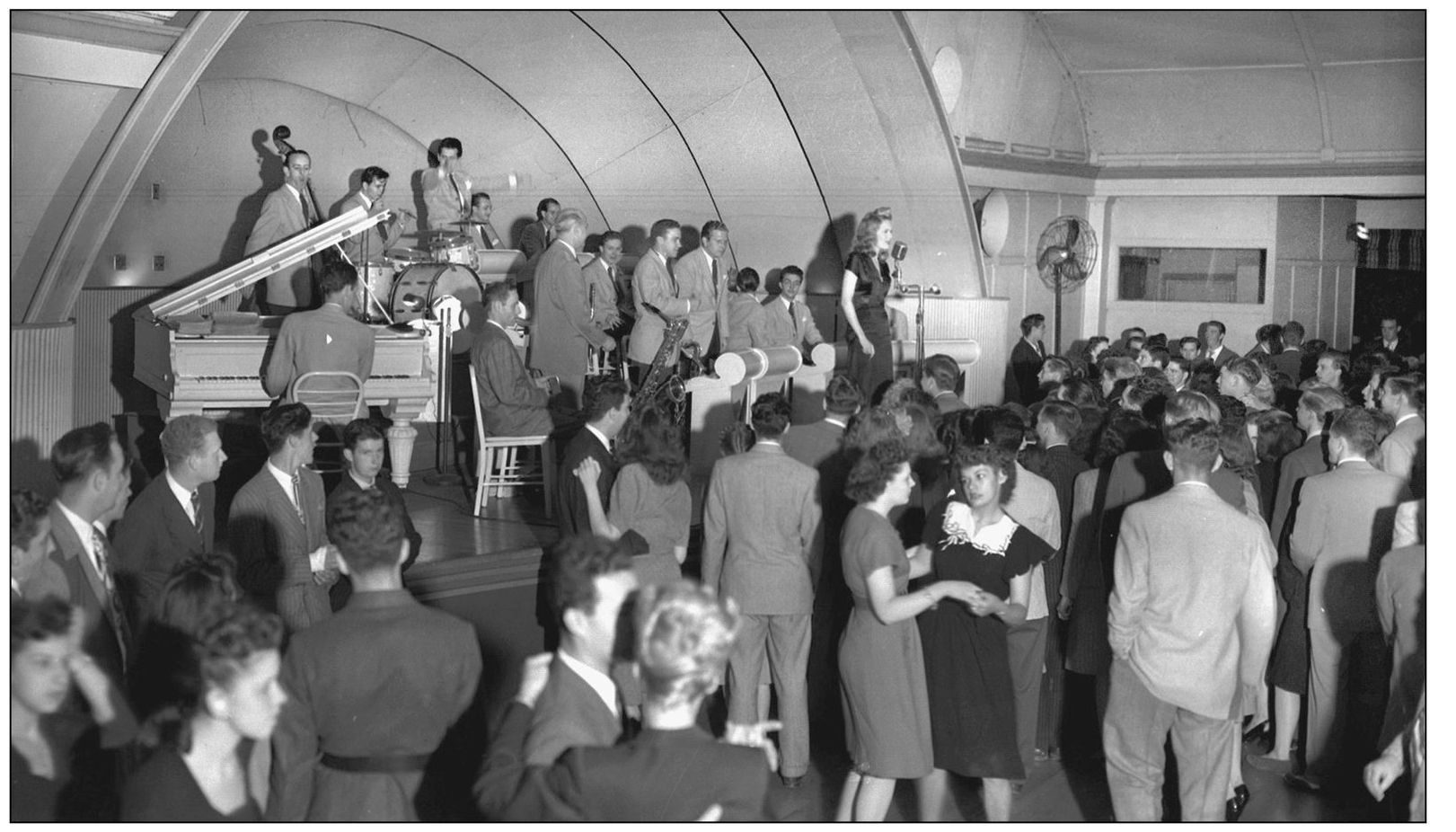
For over half a century, big bands appeared at Moonlite Gardens, located at Coney Island on the Ohio River. Nights were spent dancing to Benny Goodman, Louis Armstrong, Glen Grey, Tommy Dorsey, Count Basie, and on this evening in 1946, the Clyde Trask Orchestra. Women dance together in this scene from shortly after World War II. (Photograph by Paul Briol; courtesy of the Cincinnati Historical Society Library.)

In this 1951 scene, Moonlite Gardens has remodeled its stage, and more young men have appeared, slow-dancing with their dates to the melodies of the Johnny Long Orchestra. America is in its age of innocence. Swing is still king at Moonlite Gardens, and crowds continue to pack the dance floor. Visitors would top 5,500 with the performance of Ralph Marterie on a sweltering July evening in 1953. (Photograph by Paul Briol; courtesy of the Cincinnati Historical Society Library.)
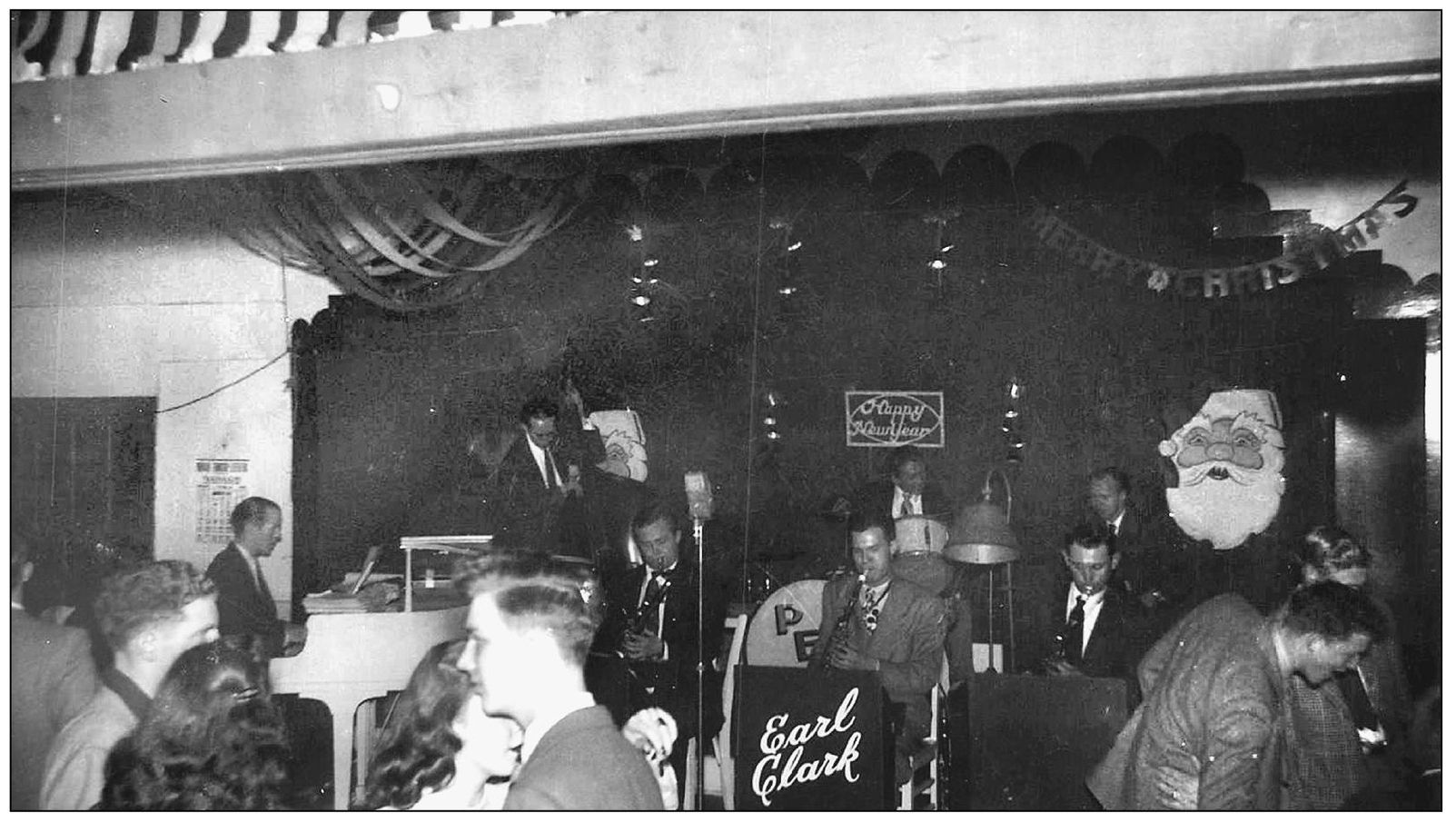
Transportation historian and saxophonist Earl Clark leads his orchestra with a lovers’ waltz in a night of dance and romance at Stone’s Beach Nightclub in Harrison on New Year’s Eve 1946. (Courtesy of the Earl Clark Collection.)

Hotels were the showplaces of the cities. Management always insisted that musicians not only play good music but dress professionally and act the part both on stage and off. The Restaurant Continentale in the Netherland Plaza Hotel was a fine place to dance to all the best local orchestras during World War II. (Courtesy of www.cincinnativiews.net.)

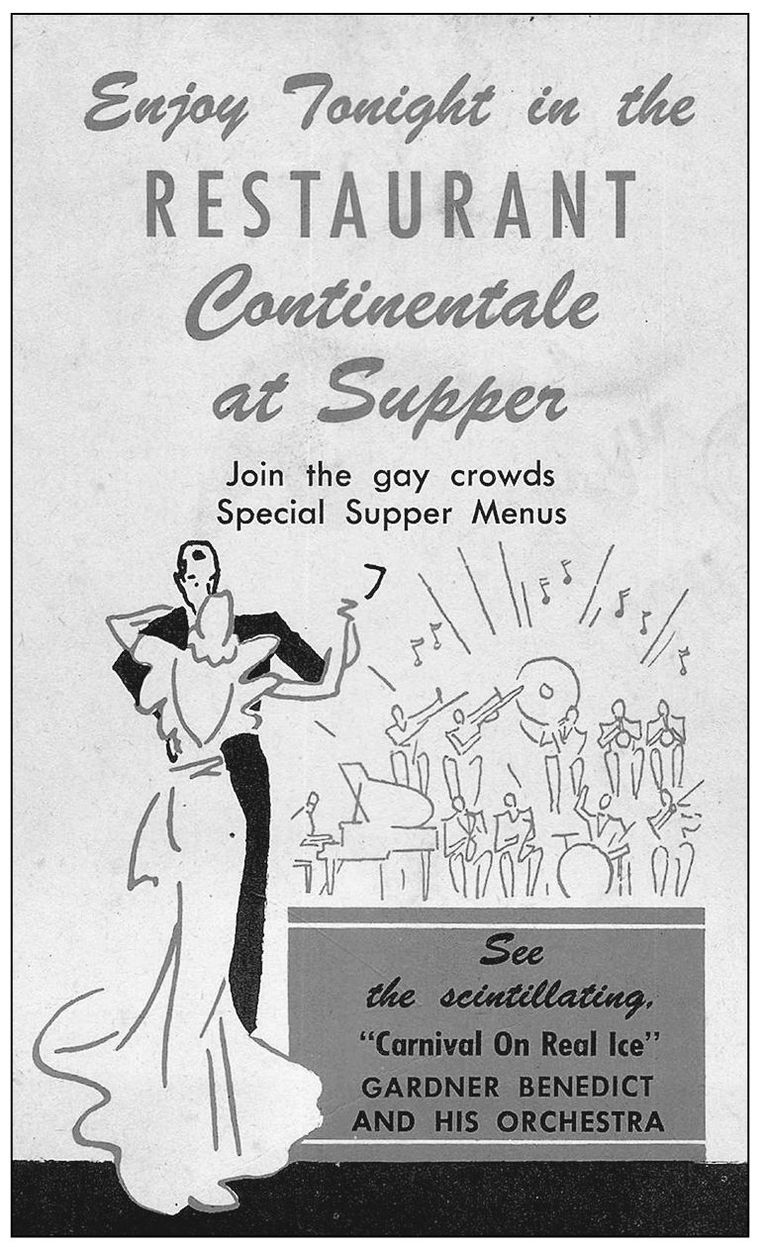
Earl Clark played saxophone for the Gardner Benedict Orchestra in the Carnival on Real Ice show in 1947. The ice show was a permanent attraction at the Restaurant Continentale throughout the 1940s. Dance music performed by the orchestra between shows was broadcast twice nightly nationwide on WLW. (Courtesy of the Earl Clark Collection.)
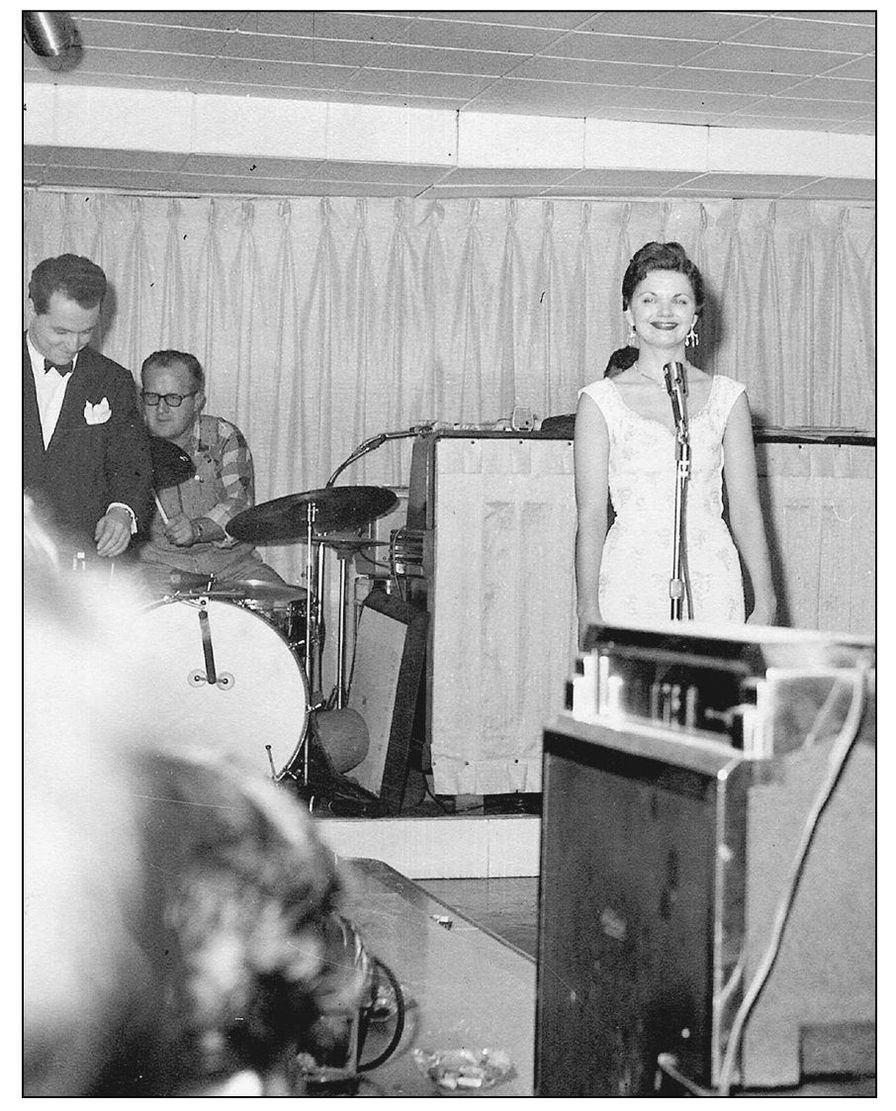
Local vocalist Judy James sang in Clarence Loos’s comedy band at Clarence’s Crazy Cottage on Reading Road in 1951. The burlesque comic Loos, dressed in a tuxedo on the far left, brought his slapstick antics to the stage in Avondale with John Cavanaugh on drums and (unseen) Bob Taylor on piano. (Courtesy of the Cincinnati Musicians Association Archives.)

Small bands were always happy to play any venue around town. As long as the music was good, the folks danced. Seen here in 1953, Lee, the 5 Bs and their Honey consisted of Rita “Honey” Robertson-Bludau on vocals, Lou Barnes on bass, Arnie Bludau on trumpet, Bill Collins on drums, Lee Bludau on saxophone, Herbert Bruner on piano, and Ben Goettke on guitar. (Courtesy of Rita Robertson.)

On a sultry evening in the summer of 1961, WKRC radio and television hosted a pops concert at Moonlite Gardens, featuring a 72-piece Cincinnati Symphony Orchestra. Major radio networks had turned to television, and local orchestras were no longer heard nationwide. Record shows had taken the place of live music, but there were exceptions for special events. This show was broadcast live on both 55 WKRC and WKRC television. (Courtesy of the Cincinnati Musicians Association Archives.)

Moonlite Gardens was still a popular destination for couples to dance on weekends, but the familiar dance floor was now filled entirely with tables and chairs. Instead of dancing to the waltzes played by the orchestra, event organizers arranged the venue so folks could stay seated, eat dinner, and enjoy classical pops. (Courtesy of the Cincinnati Musicians Association Archives.)

Ladies danced on stage at the Gayety burlesque house to live music performed by the members of this house band in 1954. From left to right are Carl Grasham on drums, Frank Branstetter on piano, band leader Joe Wright on trumpet, Ralph Overman on tenor sax, Jack Kurby on alto sax, and Wilbur Meyers on bass. (Courtesy of Carl Grasham.)

Cincinnati Reds fans loved seeing the games at hometown ballpark Crosley Field whether the team won or not. Strolling musicians often entertained the crowds headed to the games. Shown here are Jimmy Wilbur on clarinet, Pierson Dejager on trumpet, and Carl Grasham on drum. The two ladies, fancying themselves potential movie stars, stepped into the scene as the photographer took this view in 1961. (Courtesy of Carl Grasham.)

A favorite in-town summer vacation spot was Sunlite Pool at Coney Island. While soaking up the rays in 1965, folks delighted to the music of strolling musicians Dick Garrett on bass, Frank Gorman on accordion, and Cal Collins on guitar. (Courtesy of the Cincinnati Musicians Association Archives.)
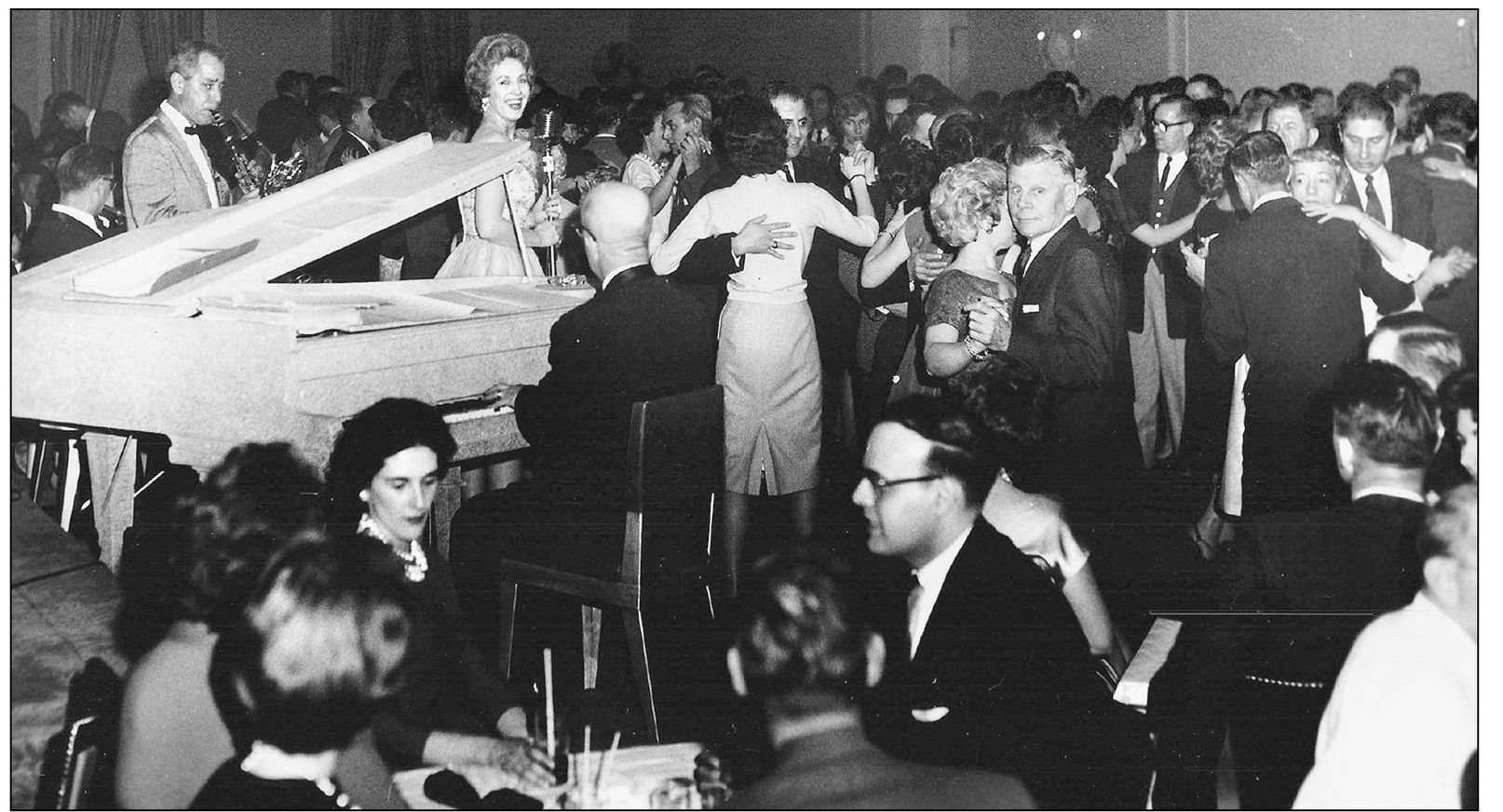
The annual Musicians’ Ball at Music Hall preserves the legacy of the ballroom while putting on a great show. The ball also fills the seldom-used Topper Ballroom (now Music Hall Ballroom) with hundreds of dancing people, like those who moved in 1965 to the music of the Jimmy James Orchestra. Jimmy James plays clarinet, while Carl Cunningham can be seen at the piano. (Courtesy of the Cincinnati Musicians Association Archives.)